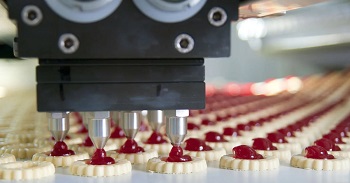The main challenge in global food demand is how to obtain high quality dry food products in efficient processing. The dry food or its extract can be a good option due to the long life storage and consumer convenience. To realize this preference, drying process offers the major role corresponding to the moisture removal from wet product. In general, the agriculture and food products with high moisture content (vegetables, herbs, starch products) are dried at low to moderate temperatures to conserve the valuable ingredients (protein, vitamins, enzymes, oil) as well as physical appearance such as color, and texture.
Meanwhile, the modern drying technology has been widely developed with attractive results in the product quality aspects. However, the efficient dryer development has been scared. For example, the energy efficiency in freeze and low temperature dryers is lower than that of a conventional convective dryer. This is due to the low value of driving force for moisture transfer and higher latent heat of moisture evaporation. Recently, the energy usage has become an important issue with respect to the limitation of fossil fuel supply. On the other hand, the availability of biomass as side product of agriculture crops has not been intensively used as renewable energy resource in drying process.
Conventional dryer with sunlight is very advantageous due to its low energy cost, and environmentally benign. The dryer has been widely used for a long time in various sectors, such as agriculture, fishery, forestry, and herbal medicine products. Unfortunately, the uses of this dryer is also restricted by main drawbacks of this dryer such as sustainability and product quality, which are rooted from its climate dependent.
Thus, the application of dryer with pre-dehumidified air for various food or agriculture crops drying can be an attractive option.
Materials and Methods
Based on the model and simple experimental test, the adsorption dryer with zeolite has shown attractive performances. In this study, the dryer was tested in wider range application for agriculture crops drying. This work consisted of two main steps. Firstly, the two types of dryer (fluidized bed and tray dryers) were constructed in laboratory scale equipped with an air dehumidification section with zeolite. The dryers were used for different application (fluidized bed dryer for paddy drying, and tray dryer for onion drying). Secondly, the dryers performances were evaluated based on product quality, drying time, and or/ heat efficiency. The heat efficiency was estimated referring to the total heat used for evaporated water divided by the total heat introduced in the system. The product quality was analyzed based on physical properties as well as important substance content.
Paddy Drying
The paddy drying system was designed as a fluidized bed dryer. The dryer was equipped with a blower to deliver air for the fluidization process. Initially, ambient air at a relative humidity (RH) of 70 – 80% and temperature about 30°C was flown to the heater at a velocity of 4.0 m.s-1. The air was heated up to dryer temperature (designed as 40°C). The air was then used for paddy drying with initial moisture content of about 25% (w/w).
Onion Drying
Generally, onion was harvested from a farm with 88 – 92% moisture content. After drying, the average moisture content in the onion was desired to be 80 – 85%. The onion drying was conducted in tray dryer completed with zeolite, as presented. The fresh air was heated up to 50°C by an electric heater. The air was used for onion drying with addition of a zeolite pack.
Heat Efficiency Estimation
The paddy and onion drying were continued with rice husk combustion as a heat source. The rice husk with combustion heat value up to 15 MJ.kg-1 was obtained as a side product of rice mill industries. Theoretically, with latent heat of moisture evaporation about 2.5 MJ.kg-1 , one kilogram of rice husk can evaporate 6 kg of free moisture.
Conclusion
The air dehumidification has been applied for tray and fluidized bed dryers. The dryers were used for paddy and onion drying. The zeolite as moisture adsorbent performed well. Therefore, the air may be significantly dehumidified. Based on product quality retention, drying time estimation, and heat utilization, the air dehumidification affected the drying performance positively. The fluidized bed and tray dryers were then operated with rice husk as a heat supply. Results showed that the heat efficiency can achieve around seventy fifth. This performance may be promising for sustainable food drying development.
We at KERONE have a team of experts to help you with your need for air dehumidification in various products range from our wide experience.

